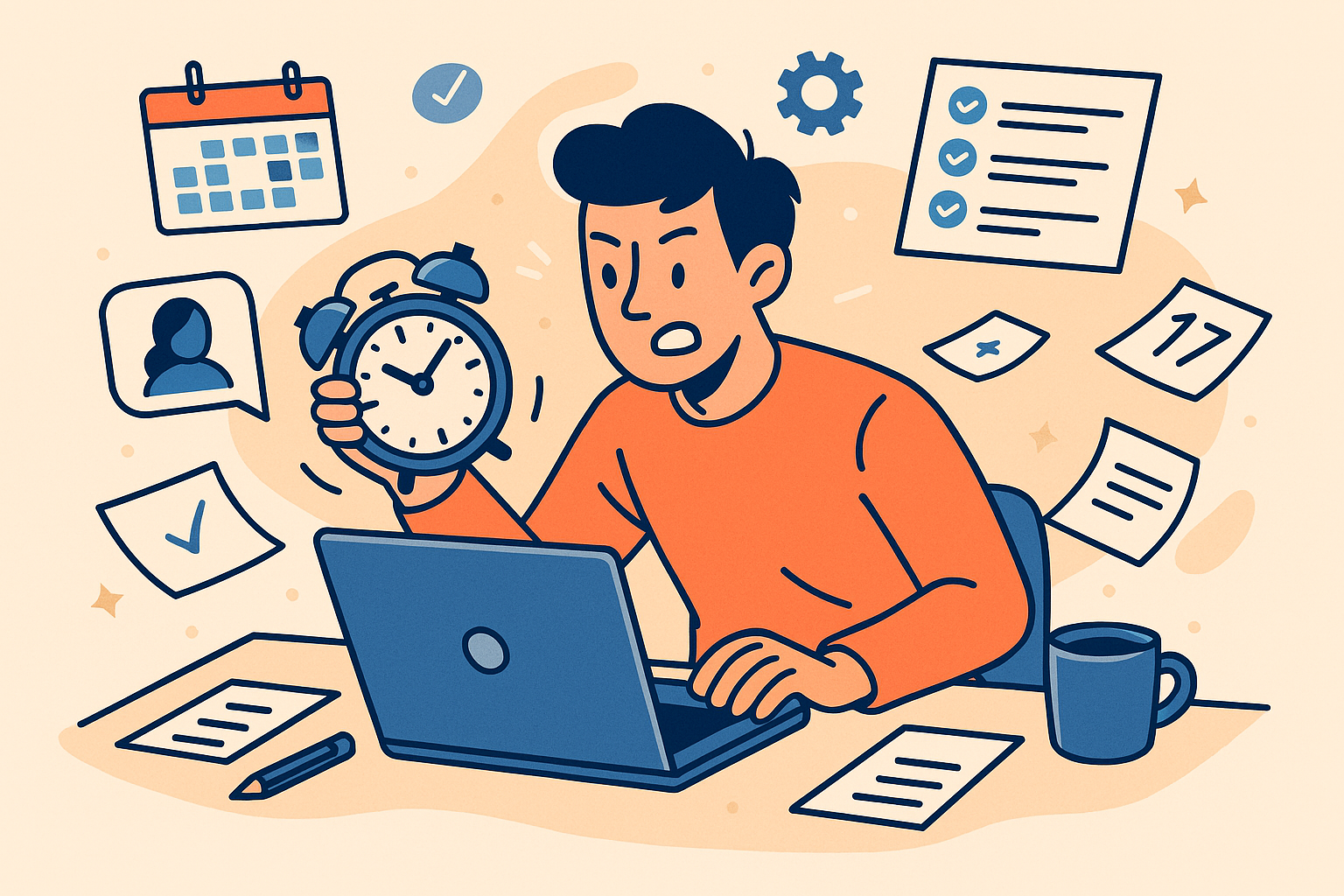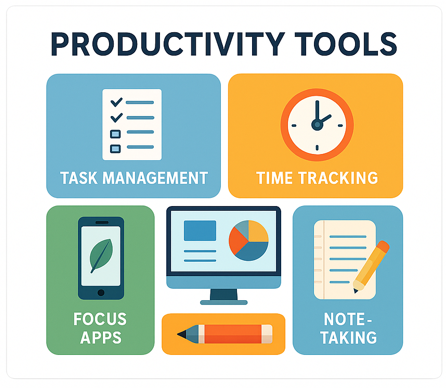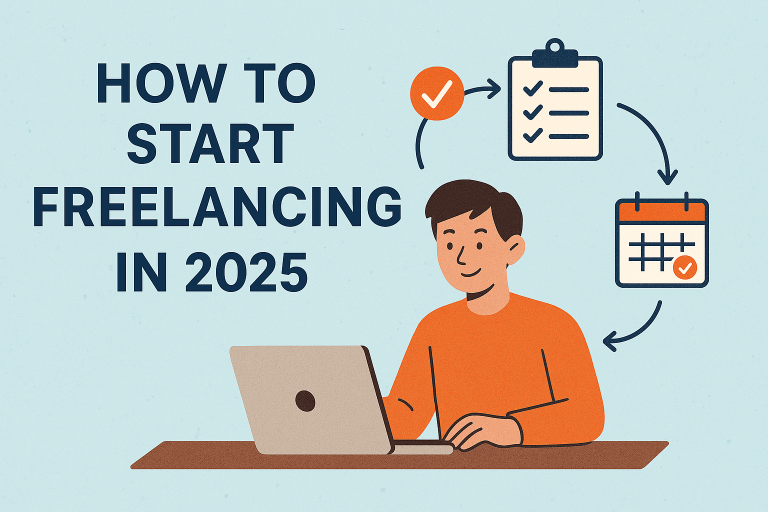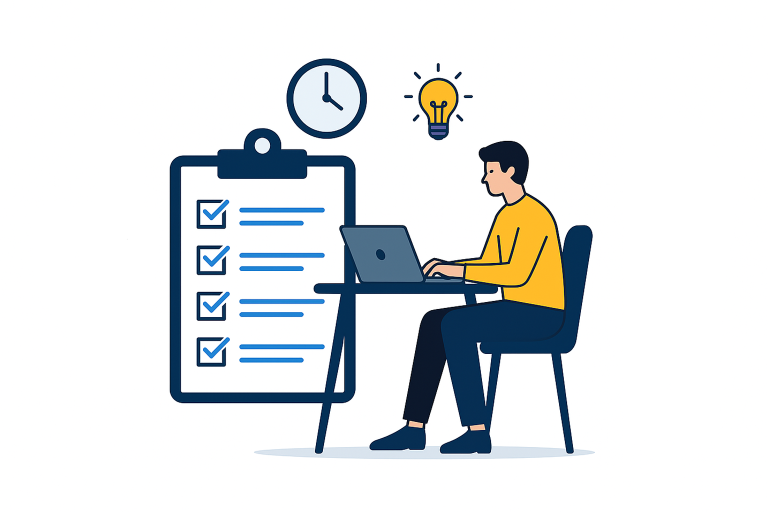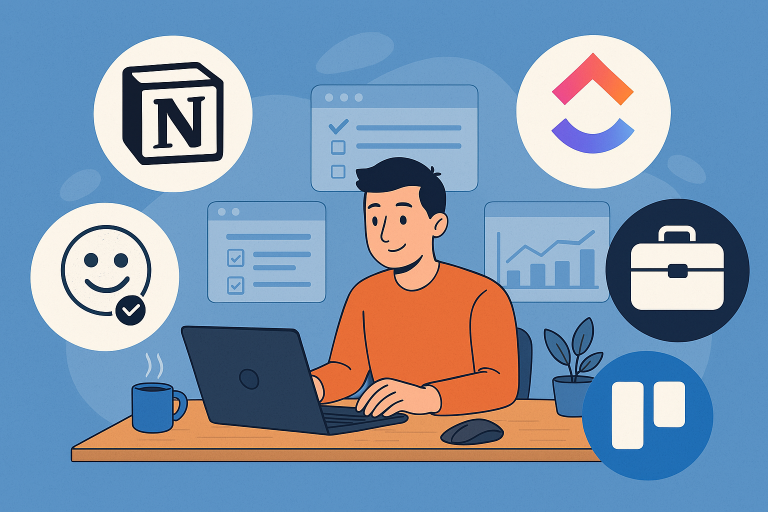7 Proven Productivity Techniques Every Freelancer Should Master in 2025
Productivity isn’t about doing more—it’s about doing what matters, faster and with less stress.
As a freelancer, your time is your most valuable asset. There’s no manager checking in, no fixed 9-to-5 clock, and no one telling you when to take a break. You are your own engine, your own brakes, and your own GPS.
That’s why mastering productivity is not optional—it’s the core of your freelance success.
In this guide, we’ve curated 7 proven productivity techniques tailored specifically for freelancers in 2025. These methods blend time-tested systems with modern digital tools, helping you work smarter, not harder.
⏱️ 1. The Pomodoro Technique (Still King in 2025)
What it is:
Work for 25 minutes, take a 5-minute break. After 4 rounds, take a longer break (15–30 minutes).
Why it works:
It trains your brain to focus in short, intense sprints. Perfect for writing, coding, designing—basically anything that requires deep work.
Bonus Tools:
• Pomofocus.io
• Forest App (Grow trees while you work!)
• Notion Pomodoro Timer Template
Combine this method with noise-cancelling headphones and a lo-fi playlist for maximum flow.
✅ 2. Eat the Frog 🐸 (Start With the Hardest Task)
What it is:
Based on Brian Tracy’s famous productivity book, this technique encourages you to do the most challenging or unpleasant task first each day.
Why it works:
your inbox or social media.
“If it’s your job to eat a frog, it’s best to do it first thing in the morning.” – Mark Twain (sort of)
🧠 3. Time Blocking + Theme Days
What it is:
Break your week into focused blocks or theme-based days (e.g., Monday = Marketing, Tuesday = Client Work).
Why it works:
You reduce context switching, which is one of the biggest killers of freelance productivity.
How to Start:
| Day | Theme Example |
|---|---|
| Monday | Admin & Planning |
| Tuesday | Deep Work (client) |
| Wednesday | Meetings & Outreach |
| Thursday | Content Creation |
| Friday | Review & Learning |
Tools to Try:
• Google Calendar
• Sunsama
• Akiflow
🚫 4. The “2-Minute Rule”
What it is:
If a task takes less than two minutes, do it immediately.
Why it works:
You avoid task pile-up and stay light-footed throughout your day.
Apply it to:
• Replying to simple emails
• Quick Slack updates
• Scheduling a call
• Saving a file to the right folder
💡 Bonus tip: Pair this with the “Zero Inbox” method to declutter your digital life.
📊 5. The 80/20 Rule (Pareto Principle)
What it is:
80% of your results come from 20% of your efforts.
Why it works:
It forces you to identify what actually matters and drop the rest.
How freelancers can apply it:
• Which clients bring the most income?
• Which marketing channel drives the most leads?
• Which types of work are the most draining?
Use a simple spreadsheet or Notion database to track patterns over time.
🎯 6. Digital Minimalism
What it is:
Eliminate non-essential tools and notifications. Less noise = more focus.
Why it works:
Most freelancers use 10+ tools per day. But how many are really necessary?
Steps to simplify:
• Turn off all non-client notifications
• Use one productivity hub (like Notion or ClickUp)
• Check email only 2–3 times per day
• Batch communication (Slack, WhatsApp, etc.)
🔕 Apps like Freedom or Cold Turkey can block distractions at scheduled times.
🌿 7. Energy-Based Scheduling (The Freelancer’s Superpower)
What it is:
Work with your energy, not against it. Identify your natural focus hours and align important tasks accordingly.
Why it works:
Freelancers aren’t chained to a 9–5. Use that freedom to build a rhythm that works for you.
How to find your peak zones:
• Track your energy and mood across one week
• Use a journal, Google Sheet, or even Notion habit tracker
• Schedule “deep work” during high-energy times, admin tasks during lows
☕ You’re more productive at 11 AM after coffee? Great. Block that time like gold.
📦 Bonus: Combine and Customize
Productivity isn’t one-size-fits-all. The most effective freelancers mix and match systems based on:
• Work type (creative, technical, collaborative)
• Personality (introvert vs extrovert)
• Tools they enjoy using
Sample Routine (Advanced Freelancer):
• 9:00–11:00: Deep Work (Pomodoro + Time Blocked)
• 11:00–12:00: Admin (Eat the Frog, 2-Minute Rule)
• 12:00–13:00: Lunch + Break
• 13:00–15:00: Meetings or Outreach
• 15:00–16:00: Low-energy tasks (email, planning)
🧭 Final Thoughts: Productivity Is a Practice, Not a Perfection
Your freelance success is directly tied to how you manage your time and focus. You don’t need to be hyper-optimized—just intentional.
At Remote Boosted, our goal is to help freelancers thrive with practical, real-world systems. Test the techniques above. Track your results. Keep what works.
And remember: working smarter isn’t a luxury—it’s your edge.

